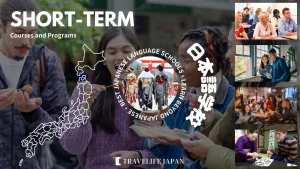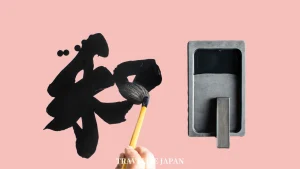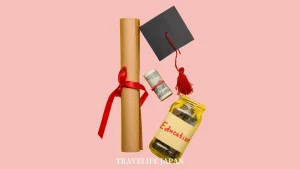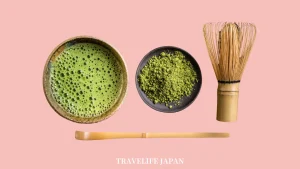Are you interested in exploring the rich culture and language of Japan without a long-term commitment? Consider the flexibility and vibrant experiences offered by short-term courses in Japan, ideal for those eager to learn on their own schedule.
Year-Round Short-Term Courses and Programs

Year-round Japanese language courses provide an excellent pathway for those looking to immerse themselves in Japan’s culture and language on a flexible schedule. These programs are uniquely designed to accommodate learners from all walks of life, offering courses as short as two weeks. This flexibility makes them ideal for travelers who wish to combine education with exploration, providing a rich, contextual backdrop to their studies.
The structure of these courses allows for enrollment at various times throughout the year, making it convenient for students to begin their studies at a time that best fits their personal schedules. Whether you’re planning a short vacation or an extended stay, these programs can be tailored to suit the duration of your visit, ensuring you can maximize your learning experience without compromising your travel plans.
The student demographic in these courses is incredibly diverse, ranging from teenagers seeking a summer learning experience to retirees eager to explore a new culture. This diversity enriches the learning environment, allowing participants to gain perspectives from different cultures and backgrounds while sharing a common goal of mastering the Japanese language.
Most year-round courses offer more than just language instruction; they include various cultural activities such as participating in traditional tea ceremonies, practicing calligraphy, or attending local festivals. These activities are integrated into the curriculum to provide a holistic learning experience that goes beyond textbooks, giving students a practical application of their language skills and a deeper understanding of the cultural nuances of Japan.
These programs are perfectly suited for those who wish to study and travel, offering a practical and enriching way to experience Japan. By learning the language in the context of its culture, students can enhance both their communicative abilities and their cultural understanding, making their travel experience in Japan all the more profound and enjoyable.

Seasonal Courses and Programs

Seasonal short-term courses in Japan capitalize on the distinct beauty and cultural richness of each season, offering tailored experiences that enhance language learning with deep cultural immersion. Each season, from spring’s cherry blossoms to autumn’s fiery foliage, serves as a backdrop for these specialized courses, making them a highly popular choice for students across the globe.
- Summer Courses
Summer is the most sought-after season for studying in Japan due to its vibrant festivals and dynamic cultural events. Courses like those offered by the JaLS GROUP and GenkiJACS integrate these experiences into their curriculum. Students can enjoy bon odori (traditional dance festivals), fireworks, and the lively atmosphere of summer matsuri (festivals). The warm weather and extended daylight hours provide ample opportunity for outdoor classes and cultural excursions, making language learning both enjoyable and contextually rich. - Autumn Courses
Autumn brings a dramatic change in scenery as the leaves turn brilliant shades of red, orange, and yellow. Programs during this season, such as those by Meiji Academy, often include excursions to scenic spots where students can practice their language skills while enjoying Japan’s famous autumnal beauty. This season also hosts various cultural and food festivals, providing students with the chance to experience Japan’s seasonal cuisine and traditional arts, such as kabuki and noh. - Winter Courses
Winter in Japan is celebrated with illuminations, winter sports, and onsen (hot spring) visits. ISI Japanese Language School offers winter courses that take advantage of this chilly season by combining language studies with cultural activities like mochitsuki (rice cake pounding) and attending Sapporo’s renowned snow festival. The crisp weather is perfect for enjoying Japan’s winter comfort foods, which serve as great conversation starters for language practice. - Spring Courses
Spring is famous for its cherry blossoms, and schools like GenkiJACS provide special classes that include hanami (flower viewing) events where students learn vocabulary related to spring and participate in traditional spring celebrations. This season is also a time of renewal and festivity, with various spring festivals that offer students a chance to immerse themselves in the local community and practice their burgeoning language skills in a lively, natural setting.
These seasonal courses are designed not only to teach the Japanese language but also to ensure students gain a comprehensive understanding of the cultural significance of Japan’s annual cycles. By participating in these courses, students can experience the unique cultural and natural beauty of Japan in a structured yet relaxed educational environment, making their learning experience as memorable as it is educational.
How to Apply Short-Term Courses and Programs

Applying for short-term Japanese language courses is a straightforward process that involves several key steps to ensure you secure a spot in your desired program. These steps are designed to be simple and user-friendly, allowing prospective students from around the world to easily navigate the application process.
Contact TRAVELIFE JAPAN for assistance. Begin by researching various programs that offer short-term courses aligned with your interests and schedule. Consider factors such as the season, location, course content, and included cultural activities. Popular schools offering diverse programs include the JaLS GROUP, ISI Japanese Language School, GenkiJACS, and Meiji Academy. Each school provides unique offerings, so choose one that best fits your educational and cultural interests.
Once you have chosen a program, verify the eligibility criteria. Most short-term courses are open to learners of all levels, from beginners to advanced speakers, but it’s important to confirm this along with any specific requirements such as age restrictions or prior knowledge of Japanese. Also, check what documents you will need for the application, which could include a copy of your passport, a recent photo, and sometimes a brief personal statement.
Visit the school’s official website to access the application form. Fill it out with accurate information, including your personal details, educational background, and course preferences. This form may also require you to specify the intended duration of your stay and start dates, which are crucial for aligning your travel plans with the course schedule.
Along with the application form, submit any required documents that the program specifies. This may include educational certificates, language proficiency tests (if applicable), and a personal statement outlining your reasons for choosing the program and what you hope to achieve. Ensure that all documents are in the required format and adhere to the guidelines provided by the school.
After submitting your application, it will undergo a review process. The short-term courses typically take quickly within 1 week, during which the school assesses your application against its criteria. Once your application is approved, you will receive an acceptance letter or email confirming your enrollment. This communication will also include further instructions on the next steps, such as paying the tuition fees.
Upon acceptance, you will be required to pay the tuition fees to secure your spot in the program. Payment methods and deadlines will be specified in the acceptance letter. After payment, start preparing for your trip. This includes arranging travel, accommodation (if not provided by the school), and any necessary insurance.
If you are not from a visa-exempt country, you may need to apply for a short-term visa. Check with the nearest Japanese embassy or consulate for visa requirements and application procedures. Finally, book your travel to Japan, ensuring that your arrival aligns with the start of the course.
By following these steps, you can successfully apply to and prepare for a short-term Japanese language course, paving the way for a memorable and enriching educational experience in Japan.
Conclusion
Short-term courses and programs in Japan are an excellent way for enthusiasts of Japanese culture and language to achieve their learning goals within a limited time frame. These programs offer flexibility, diverse cultural experiences, and the opportunity to learn in a dynamic and supportive environment. Ready to embark on your educational journey? Apply now and transform your understanding of Japan!
\ Follow Our Community /
STUDY IN JAPAN
INQUIRE NOW
Please feel free to seek our help at NO COST.
We are looking forward to meeting you!








